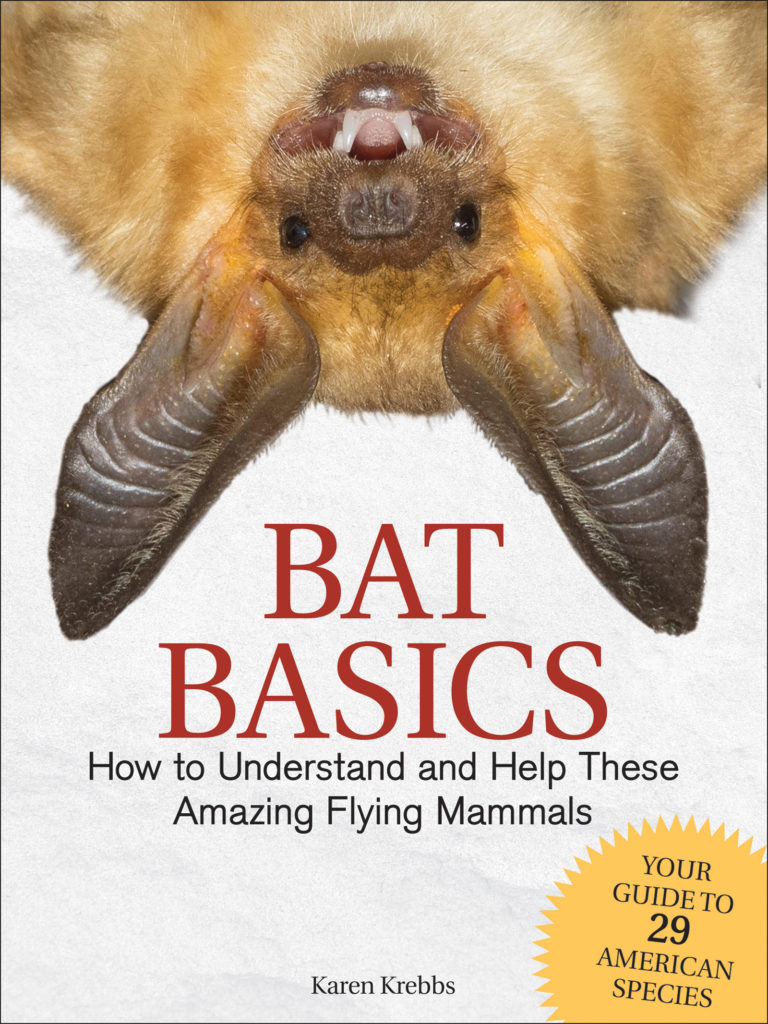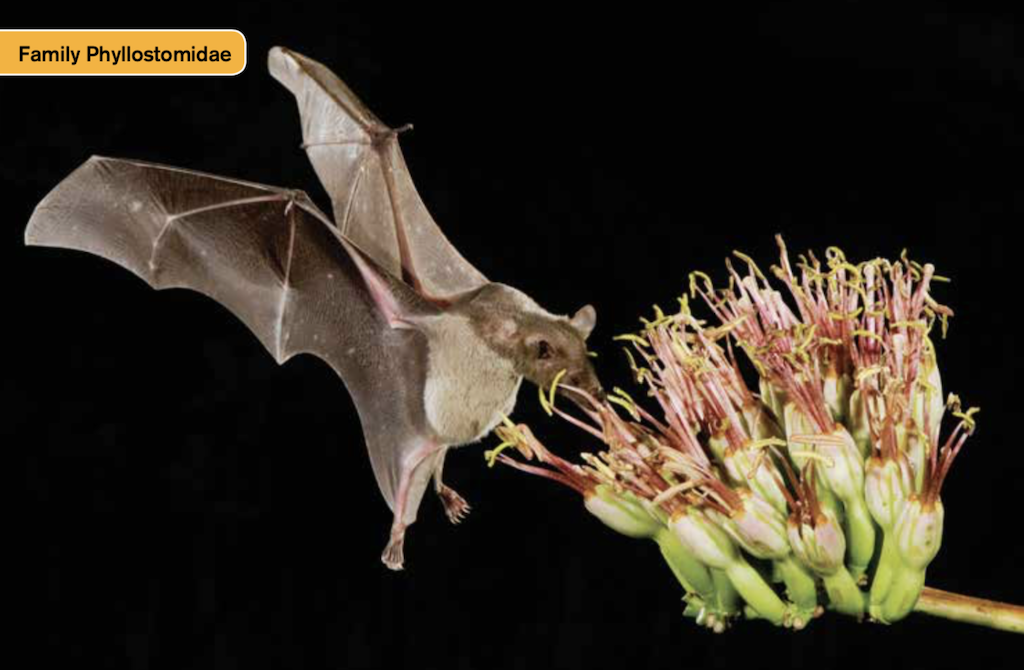
Explore the Everyday Lives of Bats

In her upcoming book, Bat Basics, Karen Krebbs tells us how bats use echolocation, why they hibernate, and what they eat. Find out why they are essential to a healthy ecosystem.
Imagine that you can fly. Now, imagine that you are flying at night, through a forest, a desert, an urban area, or above a mountain ridge, and that you’re flying without using your eyes! A bat does exactly that! They “see” with their ears. They do this by echolocation—a biological system that has a lot in common with the sonar found on submarines. Just as subs send “pings” of sound to detect other vessels, bats emit special clicks from their mouths and use the reflected sound to gain information about their surroundings. This natural sonar enables the bat to maneuver, even in total darkness or crowded caves, and it also provides them with vital information about their prey! Better yet, all of this vital information is gained within milliseconds and tells the bat what to do next.

There are 45 species of bats found in the United States. All of them are amazing flying mammals that have special adaptations and abilities that help them survive. They are a crucial part of many different ecosystems, and they provide people with many benefits. For example, they pollinate plants, disperse seeds, and devour millions of insects.
Despite the many ways that bats benefit people, they’ve been feared and misunderstood for years, and this has led people to persecute bats and even attempt to destroy entire bat populations. Many of the misconceptions that people have about bats are due to superstitions and myths. Bats certainly are nowhere near the threat they’re claimed to be.
Learn what a bat is really like. Bats have an incredible story to tell, and you won’t be disappointed in what you learn.
If you enjoyed this post, sign up for our newsletter now!


